Powder coating? It’s basically painting with dry powder instead of wet paint. You spray it on using static electricity, then bake it hard in an oven. Makes a really tough finish.
Key Takeaways
- Dry Paint, Not Wet: Uses fine powder, not liquid paint. Sticks with static.
- Baked On: Gets heated in an oven to melt and harden into a strong layer.
- Super Tough Finish: Way more resistant to chips and scratches than regular paint, usually.
- Greener Option?: Often better for the air – less smelly solvent fumes (VOCs).
- Where You See It: Lots on metal things – bike frames, appliances, patio chairs, car parts.
- Got Downsides Too: Needs special gear (oven!), tricky for super thin coats or heat-sensitive stuff.
Table of Contents
Introduction
Ever hear someone talk about a “powder coated” finish? Maybe on some outdoor furniture, a bike, a safe, maybe even your fridge? It sounds strong, right? But what is it? How’s it different from just spraying on regular paint? It’s actually a pretty cool process, different from liquids. It gives a finish that’s known for being tough. But, like anything, it’s not perfect for every single job. Knowing the basics – how they do it, why it’s popular, the good points, the bad points – helps you understand the stuff you own or maybe choose the right finish for something you’re working on. Let’s get into what powder coating is all about.
So, What Is This Powder Coating Stuff?
Okay, simplest way to put it: Powder coating is painting with dry powder. That’s the main difference. No liquid involved at the start.
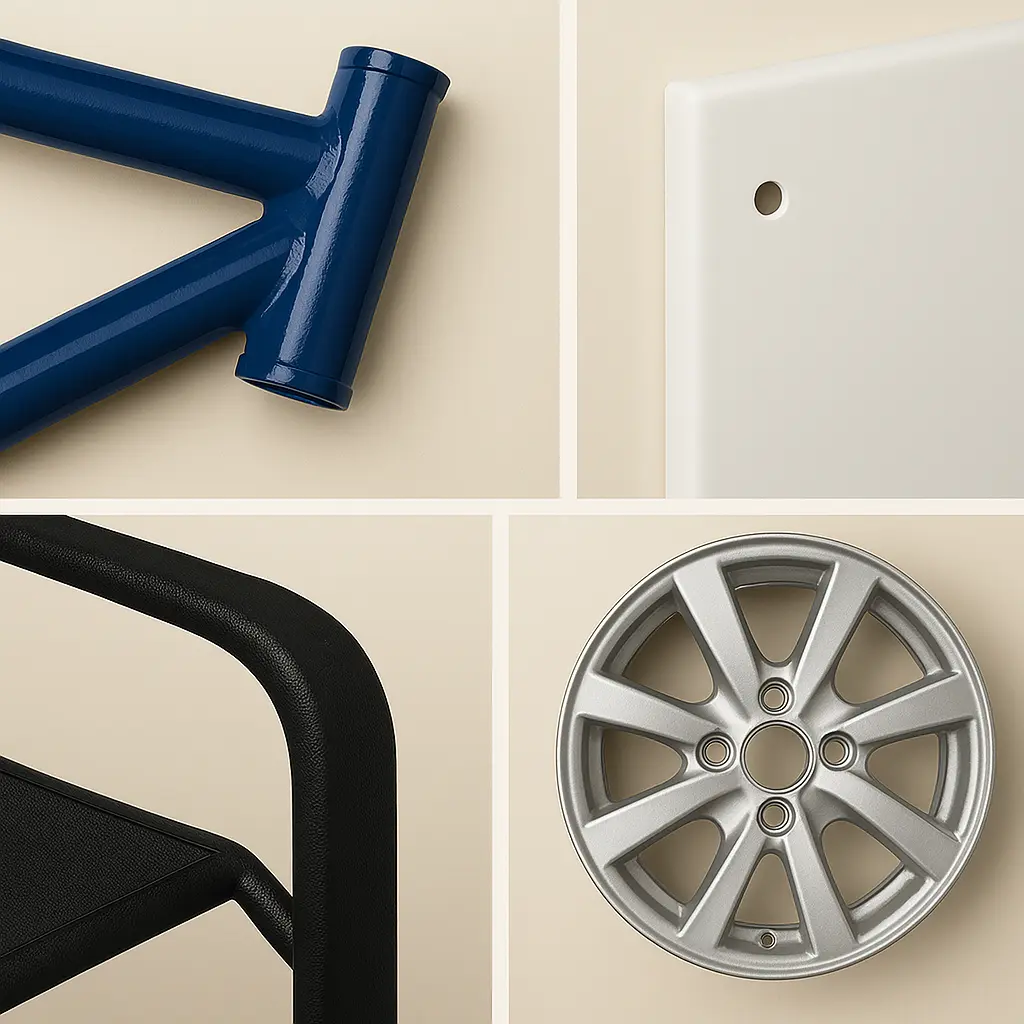
Think of it like super fine plastic dust, mixed with color pigments. This powder gets sprayed onto an object. Then, the object goes into a big oven. The heat melts the powder so it flows together into a smooth layer. As it keeps heating, it chemically cures – like baking a cake, it turns into something new and hard. When it cools down, you’ve got a tough, solid coating.
It works best on metal – steel, aluminum, stuff like that. Why? Because metal handles the oven heat easily, and you can use electricity to make the powder stick (we’ll get to that). People are finding ways to powder coat other things now, like some plastics or MDF wood, usually with lower heat or different powders, but metal is still the main thing.
How Do They Actually Do It? The Steps
Getting that smooth, hard finish takes a few steps. Skipping steps? Bad idea.
Step 1: Clean Freak Level Prep!
This is maybe the most important part. If the surface isn’t perfectly clean, the powder won’t stick right, and the finish won’t last.
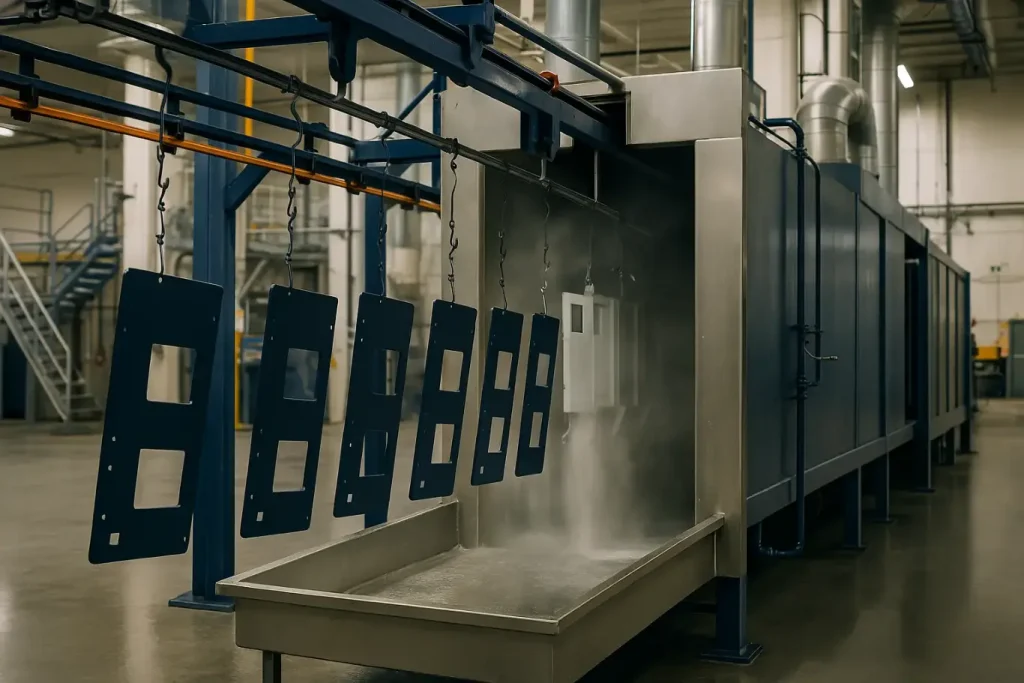
- Wash & Degrease: First, the part gets a serious bath. Washed down to get rid of any oil, grease, dirt, old paint flakes. Could be chemical washes, could be blasting it clean with grit (like sandblasting). It has to be spotless.
- Extra Step for Metal: Often, metal parts get another treatment after cleaning. Think of it like a primer wash (maybe phosphate). This helps the powder grip even better and stops rust from creeping in later.
- Rinse & Bone Dry: After all that washing and treating, it gets rinsed really well. Then, it has to be totally, completely dry. Often goes into a low-heat oven just to make sure every bit of moisture is gone. Water messes up the whole process.
Step 2: Spraying on the Powder (The Electric Slide!)
This part is pretty neat. It uses static electricity.
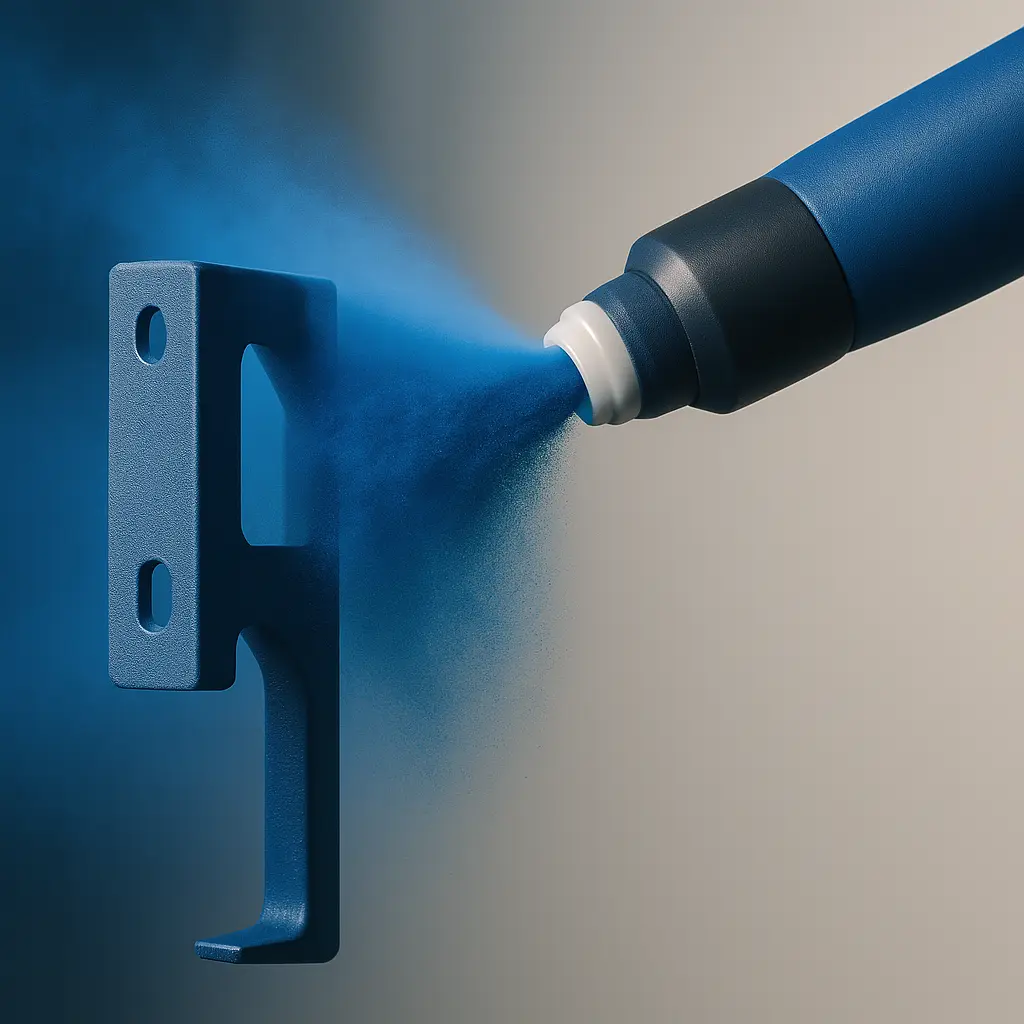
- The Powder Gun: The fine powder gets fed into a special spray gun. As the powder flies out, the gun gives it an electric charge – usually positive (+).
- Ground the Part: The thing you’re painting (the metal part) is hooked up to an electrical ground (earth). Think of it like making the part neutral or slightly negative (-).
- Opposites Attract: You know how static electricity makes things stick together? Same idea here. The (+) charged powder particles zoom towards the (-) or neutral grounded part. They really want to stick to it! This ‘static cling’ holds the powder in place, even wrapping around corners and edges surprisingly well. Gives nice even coverage.
Step 3: Baking Time! (The Cure)
Okay, the part’s covered in powder dust. Now it goes into the curing oven.
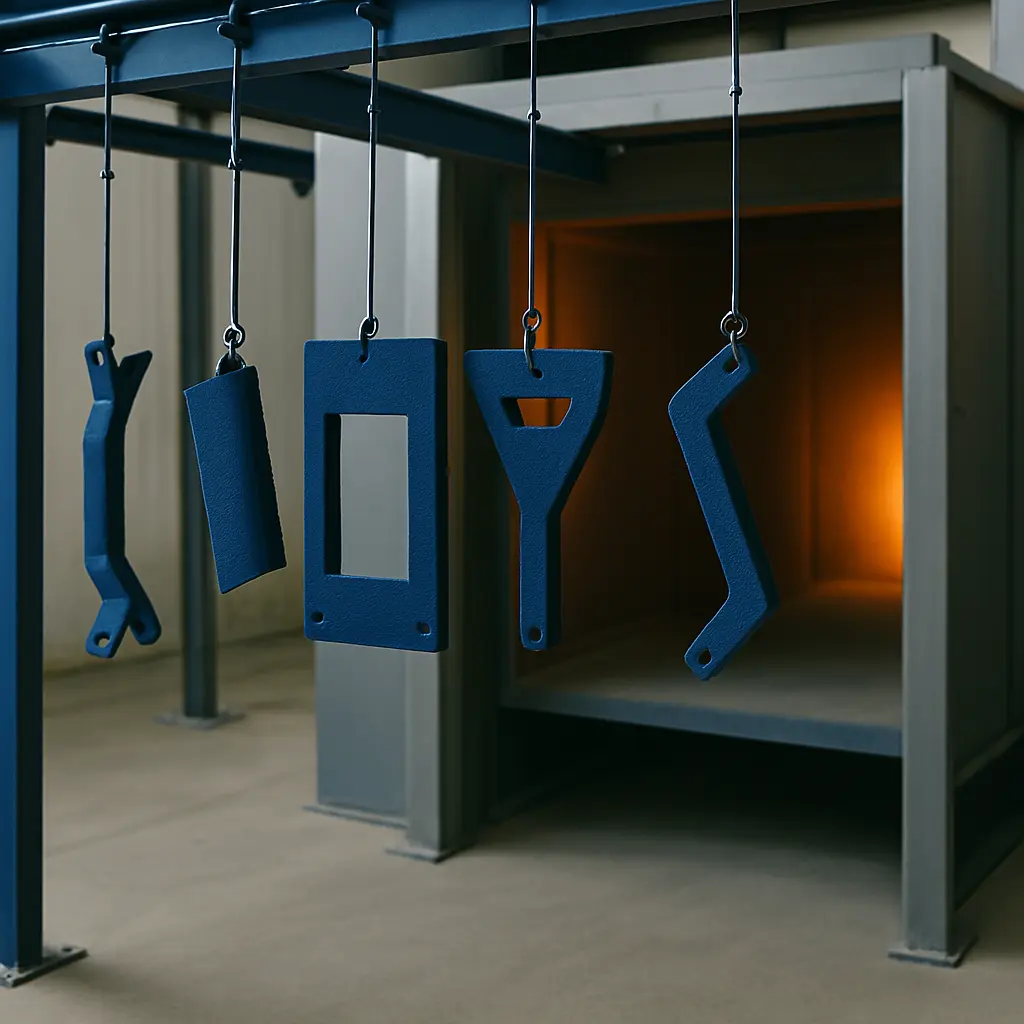
- Melt and Flow: The oven gets hot (maybe 300-400°F / 150-200°C, depends on the powder). This heat melts all those tiny powder particles. They turn into a liquid layer that flows together smoothly over the surface.
- Get Hard (Curing): While it’s hot, a chemical reaction happens in that melted layer. It’s called cross-linking. Basically, the molecules all link up together tightly, forming a strong, durable plastic network. It’s not just dried powder anymore; it’s become a solid coating.
- Cool Down: After the right amount of time baking, the part comes out. As it cools, that cured coating gets hard and tough. Job done!
Different Kinds of Powder
Not all powder is the same. The main difference is in the ‘resin’ – the stuff that melts and hardens. Two big groups:
- Thermosets: This is the most common kind. When these bake, they change chemically (that cross-linking thing). Once they’re cured, you can’t re-melt them easily. Makes them super tough against heat and chemicals. Things like epoxy, polyester, and acrylic powders are usually thermosets.
- Thermoplastics: These melt when hot and harden when cool, but they don’t do that permanent chemical change. You could technically melt them again. They often make thicker, sometimes slightly softer coatings. Good for certain things where you need maybe chemical resistance or a slippery surface (like nylon powder).
Which one gets used? Depends totally on what the finished part needs to do – stand up to sun? Resist chemicals? Be super hard?
Why Do People Like Powder Coating? (The Good Points)
It’s popular for some really good reasons, especially compared to old-school liquid paint.
1. It’s Tough!
This is the big one. Powder coating usually beats regular paint hands-down for resisting chips, scratches, fading from the sun, and just general wear and tear. That heat-curing makes a really hard shell. Things just look good for longer.
2. Looks Great, Feels Smooth

You can get a really nice, even finish. Because it melts and flows before it hardens, you don’t usually get drips or brush marks like you can with liquid paint. Plus, you can get all sorts of looks – super glossy, totally flat (matte), metallic sparkles, even bumpy textures that can hide small flaws in the metal underneath.
3. Better for the Air (Usually)
Compared to liquid paints that use strong chemical solvents, powder coating is often seen as greener.
- Less Fumes (VOCs): Those strong smells from solvent paints? Those are VOCs (Volatile Organic Compounds) going into the air, which isn’t great. Powder coating has very little, often zero, VOCs because it doesn’t need solvents to be applied.
- Less Waste: When you spray liquid paint, a lot can miss the target and just become waste. With powder, the extra powder that doesn’t stick (overspray) can often be collected and sprayed again! Much less material gets wasted.
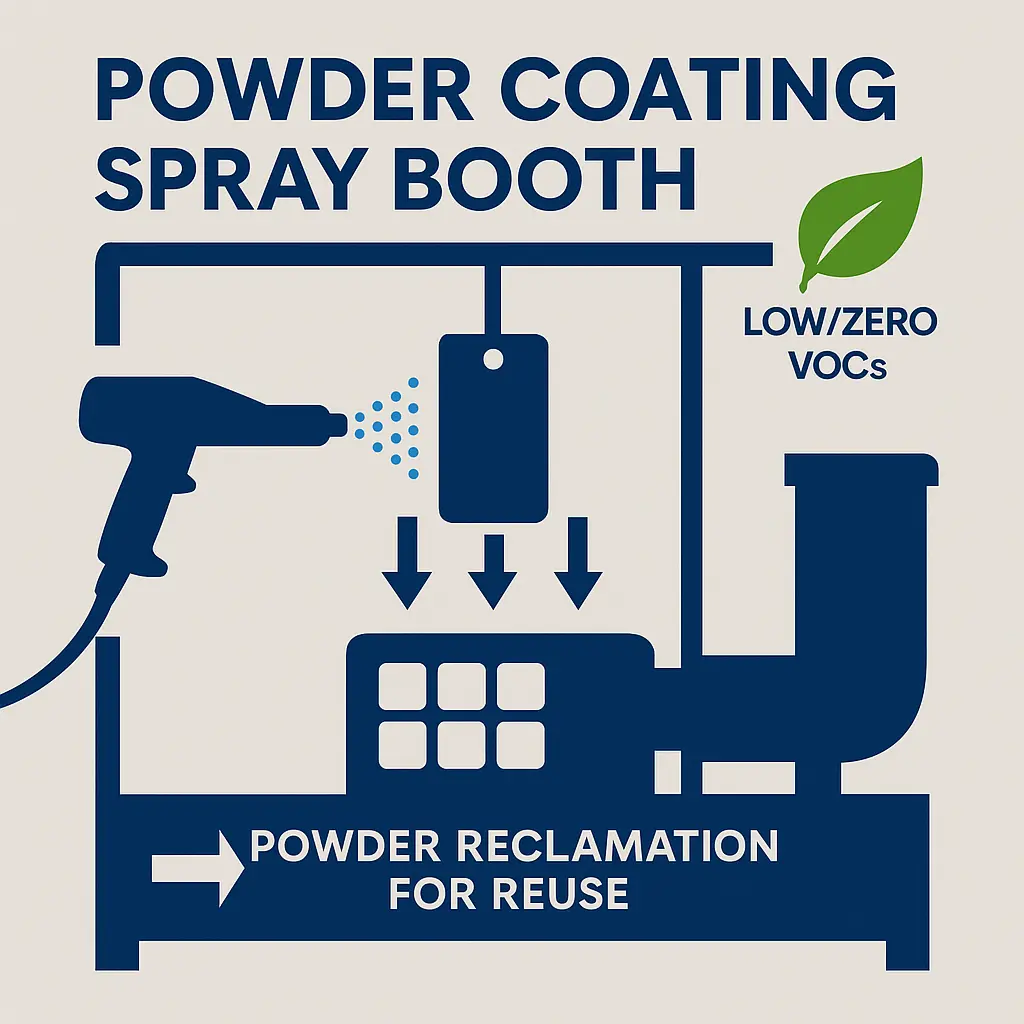
4. Can Be Efficient
That static electricity trick helps coat tricky shapes easily. And often, you can get a thick enough protective layer in just one go, which can save time compared to multiple coats of liquid paint needing drying time in between.
5. Might Save Money (Sometimes)
Setting up a powder coating line costs money upfront (guns, ovens). But for making lots of things, it can actually be cheaper in the long run. You waste less material, maybe use less energy than some liquid systems needing pollution control, sometimes need fewer coats, and the tough finish means fewer rejects or repairs later.
6. Colors Galore!
You can get powder coating in pretty much any color imaginable. Glossy, flat, metallic, textured… tons of options.
Okay, What’s the Catch? (The Downsides)
It’s not magic. There are times when powder coating isn’t the best fit.
1. Hard to Get Super Thin Coats
Powder naturally builds a thicker layer. If you need a really, really thin coating for some reason (like maybe the final clear coat on a car body), liquid paint might still be better at that.
2. Small Color Batches = Pain
Mixing up a tiny bit of custom color powder isn’t as easy as mixing liquid paints. And cleaning out the whole spray system to change colors takes time. So doing small, custom color runs can be less efficient or cost more than with liquids.
3. Needs Special Gear (Oven!)
This is a big one. You need the electrostatic gun setup and an oven big enough to bake the parts. Can’t just do it anywhere. And anything you coat has to be able to take the oven heat without melting or warping. That rules out a lot of materials.
4. Texture Can Be… Textured
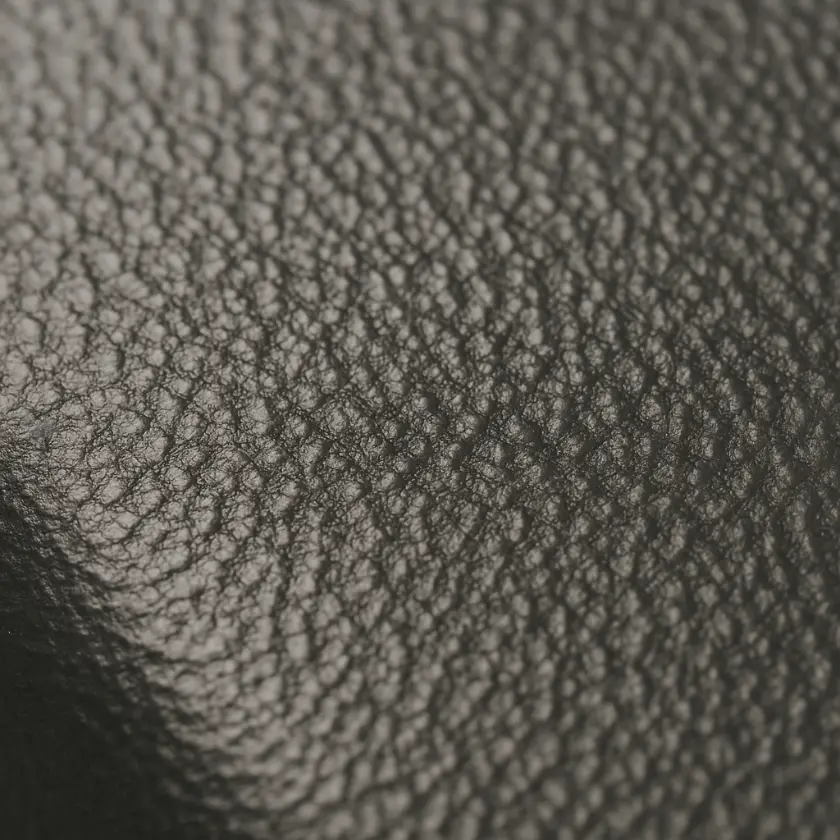
While you can get smooth finishes, sometimes powder coating can have a slight “orange peel” texture if it’s not applied perfectly. Getting that perfectly flat, glass-like finish might be easier sometimes with sprayed liquids.
5. Fixing Scratches is Annoying
If you get a deep chip or scratch later on, you can’t just dab on more powder. Usually, you have to use a special liquid touch-up paint, which might not match perfectly or be as tough. Sometimes, the only way to fix it perfectly is to redo the whole part.
Where Do You Find This Stuff?
Because it’s so durable, you see powder coating on tons of metal things:
- Cars & Bikes: Wheels, frames, bumpers, lots of engine parts.
- Home Appliances: Fridges, washing machines, microwaves, stove parts often have it.
- Building Stuff: Metal window frames, doors, fences, handrails.
- Outdoor Gear: Patio chairs, tables, playground sets, BBQ grills.
- Everyday Things: Toolboxes, metal shelves, computer towers, light fixtures.
- Industrial Stuff: Machine frames, electrical boxes, warehouse racking.
So, What’s the Verdict?
Powder coating? It’s a really solid way to finish things, especially metal. Using that charged powder and baking process creates a finish that’s way tougher than regular paint most of the time. It looks good, lasts long, and is often a bit better for the air quality during application. Sure, it needs special equipment and isn’t perfect for every single situation, but its toughness and quality make it a top choice for tons of products. Now you know what’s going on when something says it’s “powder coated”!



